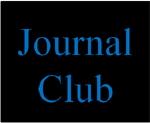 Topological Insulators (TI) were initially theoretically predicted in graphene and in inverted band-gap HgTe-based quantum wells. A year later, in 2007, the quantum spin hall effect (QSHE) was observed experimentally in HgTe quantum wells. More recently a QSHE system based on InAs/InSb electron/hole double quantum wells was proposed, and subsequently observed experimentally. Although much progress has been made in these systems, clear observation of edge state transport is still lacking, due to background bulk conductance.
Topological Insulators (TI) were initially theoretically predicted in graphene and in inverted band-gap HgTe-based quantum wells. A year later, in 2007, the quantum spin hall effect (QSHE) was observed experimentally in HgTe quantum wells. More recently a QSHE system based on InAs/InSb electron/hole double quantum wells was proposed, and subsequently observed experimentally. Although much progress has been made in these systems, clear observation of edge state transport is still lacking, due to background bulk conductance.
Here we show that electrons in ordinary III-V semiconductor double wells with an in-plane modulating periodic potential and spin-orbit interaction are tunable TIs. The essential TI ingredients, namely, band inversion and the opening of an overall bulk gap in the spectrum arise, respectively, from (i) the combined effect of the double well even-odd state splitting together with the superlattice potential and (ii) the interband Rashba spin-orbit coupling. We will introduce the origins of the interband spin-orbit coupling and using the k.p-like approach we will derive an effective Bernevig-Hughes-Zhang model. In addition to the analytical work we perform numerical calculations of the bands and explicitly verify the bulk-edge correspondence by considering a strip configuration and determining not only the bulk bands but also the edge states and their Dirac-like spectrum in the topological phase. Finally we will consider the effects of the intraband spin-orbit coupling, and the breaking of inversion symmetry due to the periodic superlattice potential, and discuss possible experimental implementation.



